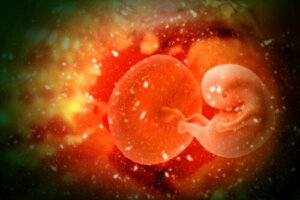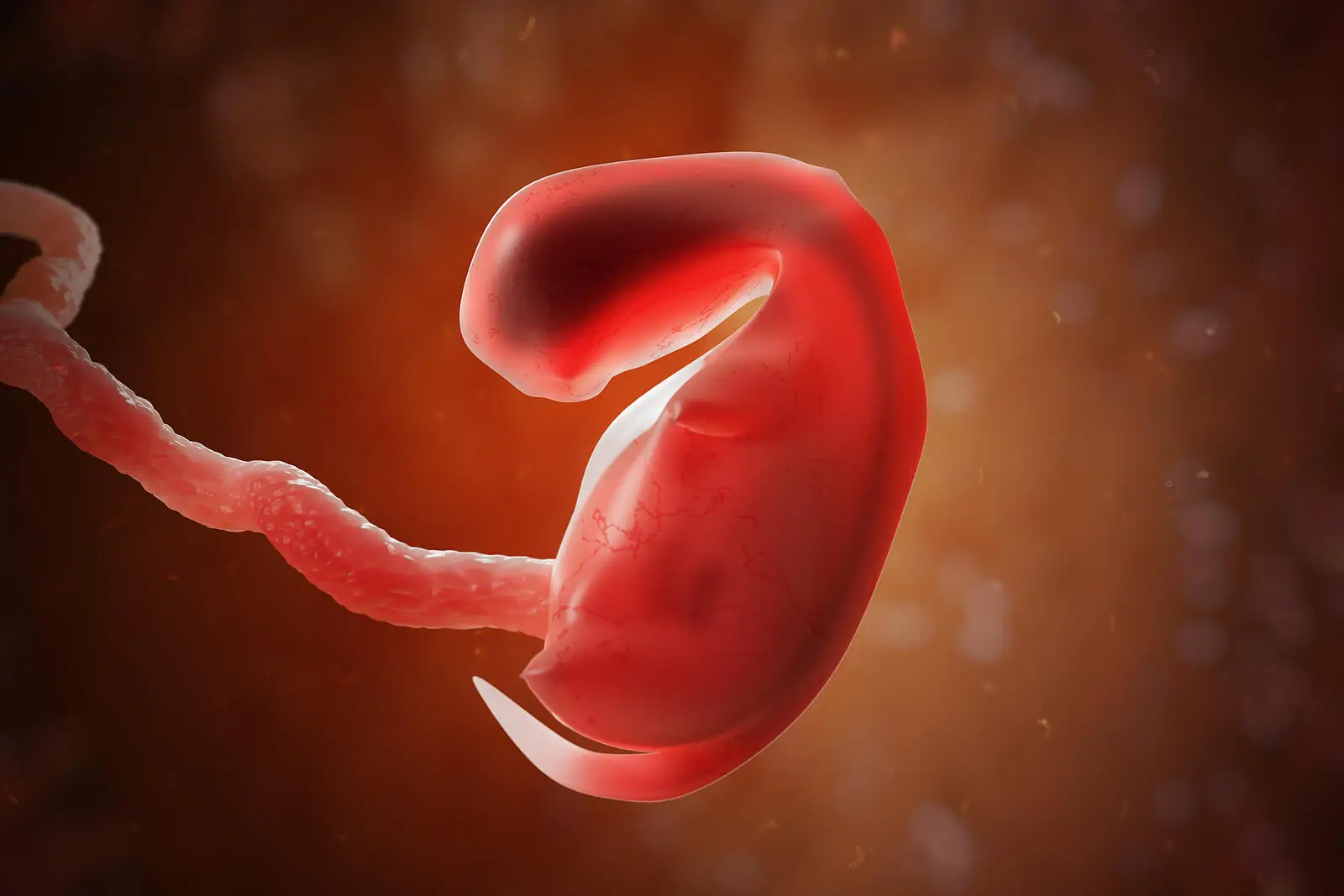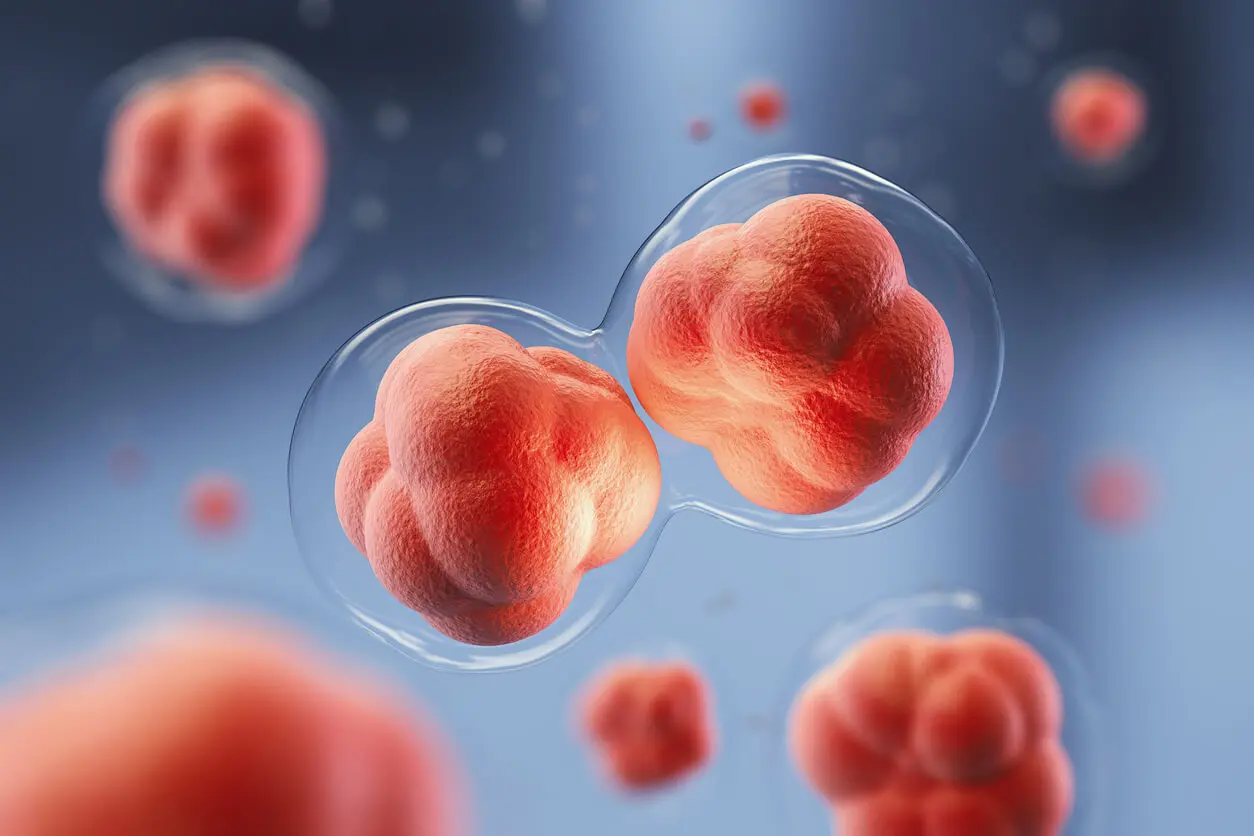What Is Embryo Adoption and What Are its Advantages?


Written and verified by the doctor María Irene Benavides Guillém
In embryo adoption, a woman becomes pregnant through embryo transfer. The mother who receives the embryo, although she isn’t the genetic mother, will be the biological mother.
The origin of the embryos is heterologous, which means that they’re the product of the joining, or union, of gametes that don’t come from the adoptive parents. The embryos are donated by couples who have undergone in vitro fertilization treatments, or they’re created from donated sperm and eggs.
This is an option for couples with fertility problems or hereditary diseases, as well as for single women with ovulatory disorders or homosexual couples who wish to have a child.
Read more here: Egg Donation, an Act of Solidarity
Advantages and complications of embryo adoption
Embryo adoption is less invasive and less time-consuming than in vitro fertilization. It has a high success rate. The chances of pregnancy vary between 19.1% and 52.4%. The live birth rate ranges from 14% to 33%.
It allows the adopting parents to experience pregnancy and birth.
Apart from what we’ve said, it’s necessary to clarify that embryo transfer, whether adopted or not, isn’t a risk-free procedure. It has been associated with hypertensive disorders in pregnancy, premature birth, low birth weight, or macrosomia, among other complications.
On the other hand, the embryos to be transferred can be fresh or frozen/thawed (cryopreserved). There is controversy as to which of the two options is better.
Moreover, there is growing controversy over the results of research published by Hargreave et al. in JAMA (Journal of the American Medical Association), which suggests a possible link between frozen embryo transfer and childhood cancer.
These results should be taken with caution until new studies yield conclusive information.

Read more here: Surrogacy: What It Is and What to Consider
The experience of families
Another different perspective from which to approach the subject is that of adoptive families. Embryo adoption is one of the most complex forms of collaborative reproduction.
Some authors use the term embryo adoption exclusively to refer to donation in which the donor chooses the adopter, maintaining contact with him/her and, on occasions, also with the child engendered. This would be in contrast to the anonymous donation mediated by health institutions.
In general, the experiences of both donors and adopters are positive. Both parties feel satisfied with working together for the welfare of the future human being.
Diverse extended families are built, in which biological, genetic, and adoptive parents and children usually coexist, broadening the concept of family. However, it is essential that donors maintain a certain distance to allow the children to develop healthily.
It’s advisable to have expert psychological support to enable all parties involved to understand and assimilate the process.
Embryo adoption as a solution to cryopreservation
Cryopreservation consists of storing human cells and tissues at low temperatures to stop all their biological activity, without damaging or destroying them. With this technique, embryos remain viable with their developmental potential unaltered. Thus, advances in this area allow up to 97% of the embryos to survive.
However, once the reproductive project of their progenitors has been completed, a considerable number of embryos left over from the processes are cryopreserved without a defined destination. One of the possibilities in the face of this is donation for reproductive purposes.
In this way, after achieving one’s own gestation, one can help others to make their desire to become parents a reality. And simultaneously, give that embryo a chance.

Another form of motherhood
The issue of embryo adoption is complex. The long-term effects in all spheres: biological, emotional, psychological, and social are still unknown.
It’s essential to find out the current legislation in your country. It is also important to seek advice from qualified medical professionals.
But perhaps the most important thing is to analyze and reflect deeply taking into account our values, beliefs, preferences, desires and expectations. We should understand that, if we decide to go ahead, then once a human being is engendered, we will have a responsibility towards it, regardless of its origin.
An embryo that is adopted will come into existence because of the decision of its adoptive parents. However, being a parent doesn’t imply taking ownership of a property, but, rather, a commitment. It is about building bonds beyond genes.
All cited sources were thoroughly reviewed by our team to ensure their quality, reliability, currency, and validity. The bibliography of this article was considered reliable and of academic or scientific accuracy.
- Cabezas M. R., Cayón-De Las Cuevas J. Deseados pero abandonados: el incierto destino de los embriones criopreservados. RBD. Revista de Bioética y Derecho 2021;139-157.
- Álvarez-Díaz JA. Embryo donation among Latin-Americans who have attended assisted reproduction techniques: a first empirical approach. JBRA Assist Reprod. 2021;25(1):81-89.
- Vuong LN, Ly TT, Nguyen NA, Nguyen LMT, Le XTH, Le TK et al. Development of children born from freeze-only versus fresh embryo transfer: follow-up of a randomized controlled trial. Fertil Steril. 2020;114(3):558-566.
- Yamal I. J. D., Castañeda J. C., Corredor F. G., León R. E. S., Pérez J. E. V., Lechuga, Y. P. et al. Programa de adopción embrionaria in útero: experiencia de 10 años. Medicina 2019;41(1):8-17.
- Hallich O. Embryo donation or embryo adoption? Conceptual and normative issues. Bioethics. 2019;33(6):653-660.
- Pereira N, Petrini AC, Hancock KL, Rosenwaks Z. Fresh or Frozen Embryo Transfer in In Vitro Fertilization: An Update. Clin Obstet Gynecol. 2019;62(2):293-299.
- Hargreave M, Jensen A, Hansen MK, Dehlendorff C, Winther JF, Schmiegelow K et al. Association Between Fertility Treatment and Cancer Risk in Children. JAMA. 2019;322(22):2203-2210.
- Frith L, Blyth E, Lui S. Family building using embryo adoption: relationships and contact arrangements between provider and recipient families-a mixed-methods study. Hum Reprod. 2017;32(5):1092-1099.
- Goedeke S, Daniels K, Thorpe M, Du Preez E. Building extended families through embryo donation: the experiences of donors and recipients. Hum Reprod. 2015;30(10):2340-50.
This text is provided for informational purposes only and does not replace consultation with a professional. If in doubt, consult your specialist.








